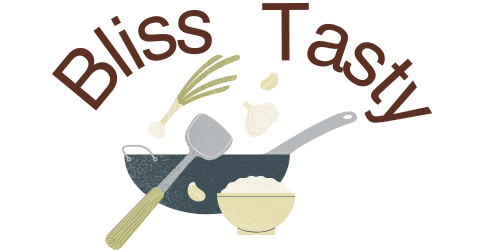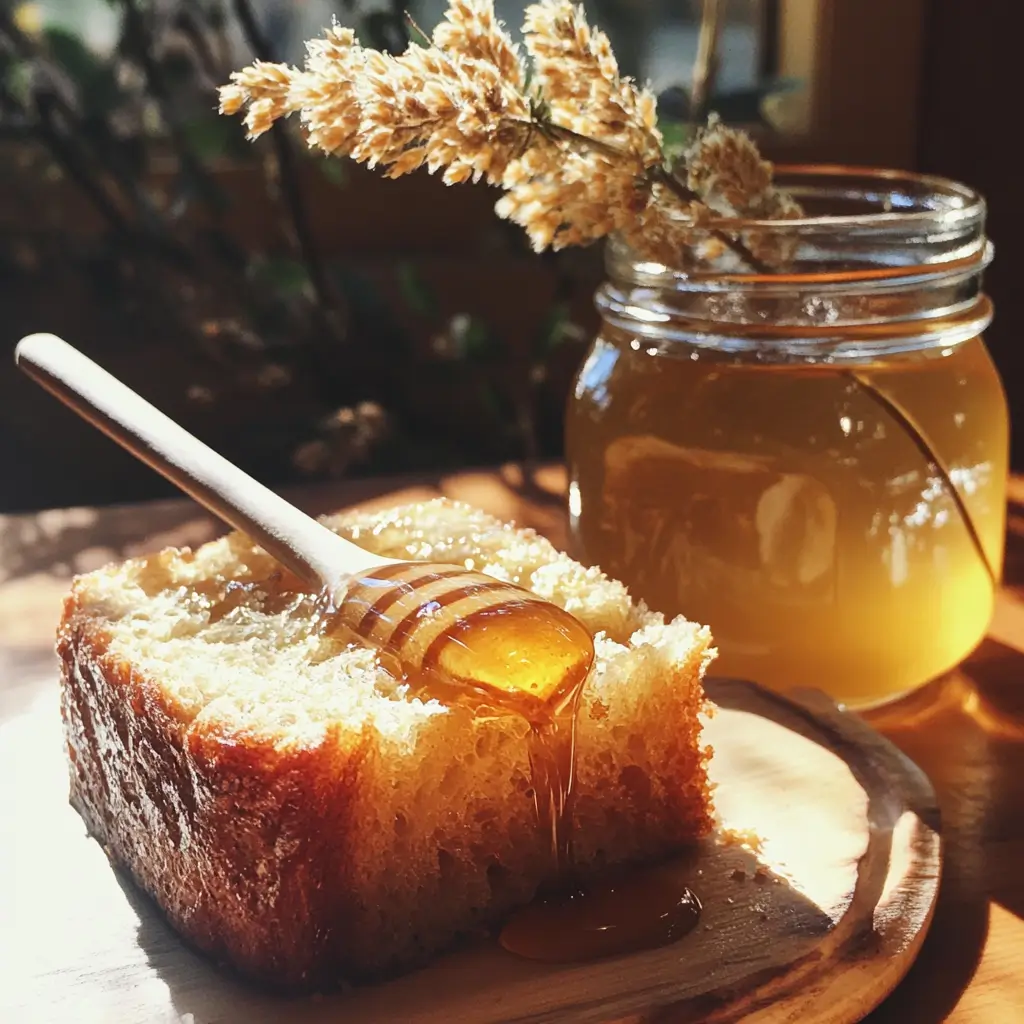If you’ve ever baked bread at home (or even just dreamed about it), you’ve probably seen a recipe that calls for honey. Maybe you thought, “Wait… honey in bread? Is that even a thing?” Trust me—it’s not only a thing, it’s the thing. It’s like the secret ingredient that turns your average loaf into something a little sweeter, a little fluffier, and definitely a lot more delicious. So, why exactly do we add honey to bread?
In this blog post, I’ll take you through the sweet science behind honey in bread. We’ll talk about why it works, the benefits it adds to the texture and flavor, and why it’s the perfect natural sweetener. Grab your apron and let’s get baking, shall we?
The Magic of Honey in Bread
You know that feeling when you slice into a fresh loaf of bread, and it’s perfectly soft, just the right amount of chewy, and has a slight sweetness that makes it even more irresistible? Well, that magic doesn’t just happen by accident—honey is a big part of the reason why.
Honey isn’t just a sweetener; it’s also a natural humectant. That means it has the ability to attract and retain moisture. So, when you add honey to your bread dough, it helps keep the bread soft and tender for days after baking. Ever had a loaf that turned dry and crumbly the next day? Honey helps solve that problem by locking in moisture, giving your bread a longer shelf life while keeping that fresh-out-of-the-oven feel.
But here’s the real kicker: honey does more than just soften the bread—it enhances the flavor too. It adds a light, delicate sweetness that perfectly balances out the richness of the flour, yeast, and butter. Think of it like a pinch of salt in chocolate chip cookies—just enough to bring out the best in all the ingredients, but not so much that it’s the star of the show.
If you’ve ever baked a loaf without honey and noticed it ended up a little too dry or plain, trust me, a little drizzle of honey can make a world of difference. Whether you’re baking a sweet bread like Banana Honey Cinnamon Bread or a savory loaf for sandwiches, honey is the unsung hero that helps tie everything together.
The Flavor Profile: Sweet, But Not Too Sweet
When it comes to bread, especially savory kinds like sandwich loaves, you don’t want the bread to be overly sweet. That’s where honey works its charm. It’s sweet, but not overpoweringly so. Unlike sugar, which can sometimes make bread taste like dessert, honey adds just the right amount of sweetness without stealing the show.
Plus, the flavor of honey can vary depending on the type. Clover honey, for example, is mild and light, perfect for subtle sweetness. If you’re feeling adventurous, try a darker honey, like buckwheat or chestnut—those will give your bread a rich, almost molasses-like flavor.
Honey’s sweetness also complements the yeast’s natural flavors, adding a bit of depth. It’s like a secret handshake between the sugar and the yeast, resulting in a bread that rises perfectly with a slight hint of sweetness.
Honey Helps Bread Stay Fresher for Longer
One of the best things about using honey in bread is that it keeps your loaves fresh for a much longer time. You know how bread can go stale in a day or two, especially if it’s made without preservatives? Honey helps solve that problem by naturally retaining moisture. When you add honey to the dough, it acts like a moisture magnet, pulling in water and locking it into the bread. This means your loaf stays soft and fluffy for days instead of getting hard and crusty. If you’ve ever baked bread and wished it would last a little longer, honey is your secret weapon.
The added bonus is that the flavor also stays fresher for longer. Over time, bread made with honey doesn’t develop that “old bread” taste that’s hard to avoid with just sugar. Instead, you’ll have a loaf that maintains its rich flavor and softness. It’s especially great for bread that you plan to store for a few days, or if you’re making a big batch of dough ahead of time for future meals.
Honey vs. Sugar: Why Choose Honey?
You might be thinking, “Why not just use regular sugar instead?” That’s a fair question! Sugar is commonly used in bread recipes, but honey has a few advantages that make it the better choice for many bakers.
1. Moisture Retention
Honey’s moisture-retaining properties give bread a soft, airy texture that lasts. If you’ve ever baked a loaf of bread and noticed it gets hard or dry the next day, honey is your new best friend. While sugar can make bread a little crispy on the outside, honey keeps things soft for longer.
2. Natural Sweetener
Honey is a more natural sweetener compared to refined sugar. If you’re looking to make your bread a little healthier, honey is a great alternative. It contains antioxidants, vitamins, and minerals like zinc and iron (not that we’re claiming bread is a superfood—but it’s nice to know it’s a little better for you, right?).
3. Rich Flavor Profile
Honey isn’t just sweet—it’s got complexity. Unlike sugar, which can taste pretty one-dimensional, honey brings an extra layer of flavor. Whether it’s floral, fruity, or spicy, honey adds depth to your bread that sugar just can’t match.
How Much Honey Should You Use in Bread?
Okay, now that we know why honey is awesome in bread, let’s talk about the how. How much should you be adding to your dough, and does it mess with your bread’s structure? Here’s the thing: adding honey to bread dough isn’t tricky, but it can be a bit of an art.
Generally, you’ll see about 1-2 tablespoons of honey for a loaf of bread (for a typical 2-3 cup flour recipe). But the beauty of honey is you can adjust it based on your preferences.
- If you want a slightly sweeter loaf (maybe for a honey wheat bread), add more.
- If you’re just looking for a subtle touch of sweetness, keep it light.
One thing to keep in mind when you’re baking with honey is that it will make the dough stickier than when you use sugar. This is because of its moisture content. So, if your dough feels a little too sticky, don’t panic. Just add a bit more flour to balance it out!
Tip: If you’re using honey in a bread machine or stand mixer, make sure to add it with the wet ingredients so it mixes evenly throughout the dough.
How Does Honey Affect the Yeast?
Here’s the deal—honey and yeast are like best friends. Yeast feeds on sugar to rise, and honey has natural sugars that yeast can’t resist. When you add honey to your bread dough, it helps activate the yeast and gives it a little boost.
The natural sugars in honey (like glucose and fructose) are readily available for yeast, making it easier for your dough to rise. The result? A fluffy, well-risen loaf with a great texture.
Pro tip: Some people use honey as a replacement for sugar in yeast-based recipes because it helps the dough rise more quickly. So, if you’re in a pinch and need that bread to rise faster, honey might just be your go-to ingredient.
Why Is Honey Healthier for Bread?
Let’s talk a little more about honey’s health benefits (just because it’s important to know, especially when you’re baking at home for family and friends).
- Rich in Antioxidants
Honey contains antioxidants that can help fight free radicals in the body. It’s not going to make you live forever, but hey, if you’re looking for something that’s a little more beneficial than processed sugar, honey is a solid option. - Natural Energy Boost
Ever noticed how you don’t get the same sugar crash after eating honey as you do with refined sugar? That’s because honey provides a more stable release of energy. So, that slice of honeyed bread might just keep you going through the afternoon without the slump. - Better Digestion
Honey has been shown to have some digestive benefits. It can act as a prebiotic, helping your gut bacteria thrive. While bread itself isn’t a miracle food, honey is one little ingredient that adds a bonus when you’re thinking about your gut health.
How to Make Honey Bread: A Simple Recipe
If you’re ready to give honey in bread a try, here’s a simple recipe to get you started. Trust me—it’s way easier than you think.
Ingredients:
- 3 cups all-purpose flour (you can also try whole wheat or a mix)
- 2 teaspoons instant yeast
- 1 tablespoon honey (or more if you want it sweeter!)
- 1 teaspoon salt
- 1 cup warm water
- 2 tablespoons olive oil (or butter for a richer flavor)
Instructions:
- Activate the Yeast: In a small bowl, mix warm water (about 110°F, not too hot!) with honey and yeast. Stir it up, and let it sit for about 5-10 minutes until it’s frothy.
- Mix the Dough: In a large bowl, combine flour and salt. Add the yeast mixture along with olive oil and stir until it forms a dough.
- Knead: Turn the dough out onto a lightly floured surface and knead it for about 8-10 minutes until smooth and elastic. You can also use a stand mixer with a dough hook.
- First Rise: Place the dough in a lightly oiled bowl, cover it with a towel, and let it rise for about an hour, or until it doubles in size.
- Shape the Loaf: Punch down the dough and shape it into a loaf. Place it in a greased loaf pan and let it rise for another 30 minutes.
- Bake: Preheat your oven to 375°F. Bake the loaf for 25-30 minutes, or until it’s golden brown on top and sounds hollow when tapped.
- Cool and Enjoy: Let the bread cool for a few minutes before slicing. (It’ll be hard, but trust me, it’s worth it!)
Final Thoughts: The Sweet Secret to Perfect Bread
So, why put honey in bread? Because it makes everything better. Whether you’re looking for a softer texture, a hint of sweetness, or a natural alternative to sugar, honey is the key. Plus, it works its magic with yeast, making your bread rise perfectly every time.
Once you try honey in your bread, you’ll wonder why you didn’t start sooner. Give it a shot,


1 thought on “Why Adding Honey to Bread Makes a Big Difference: The Sweet Secret”